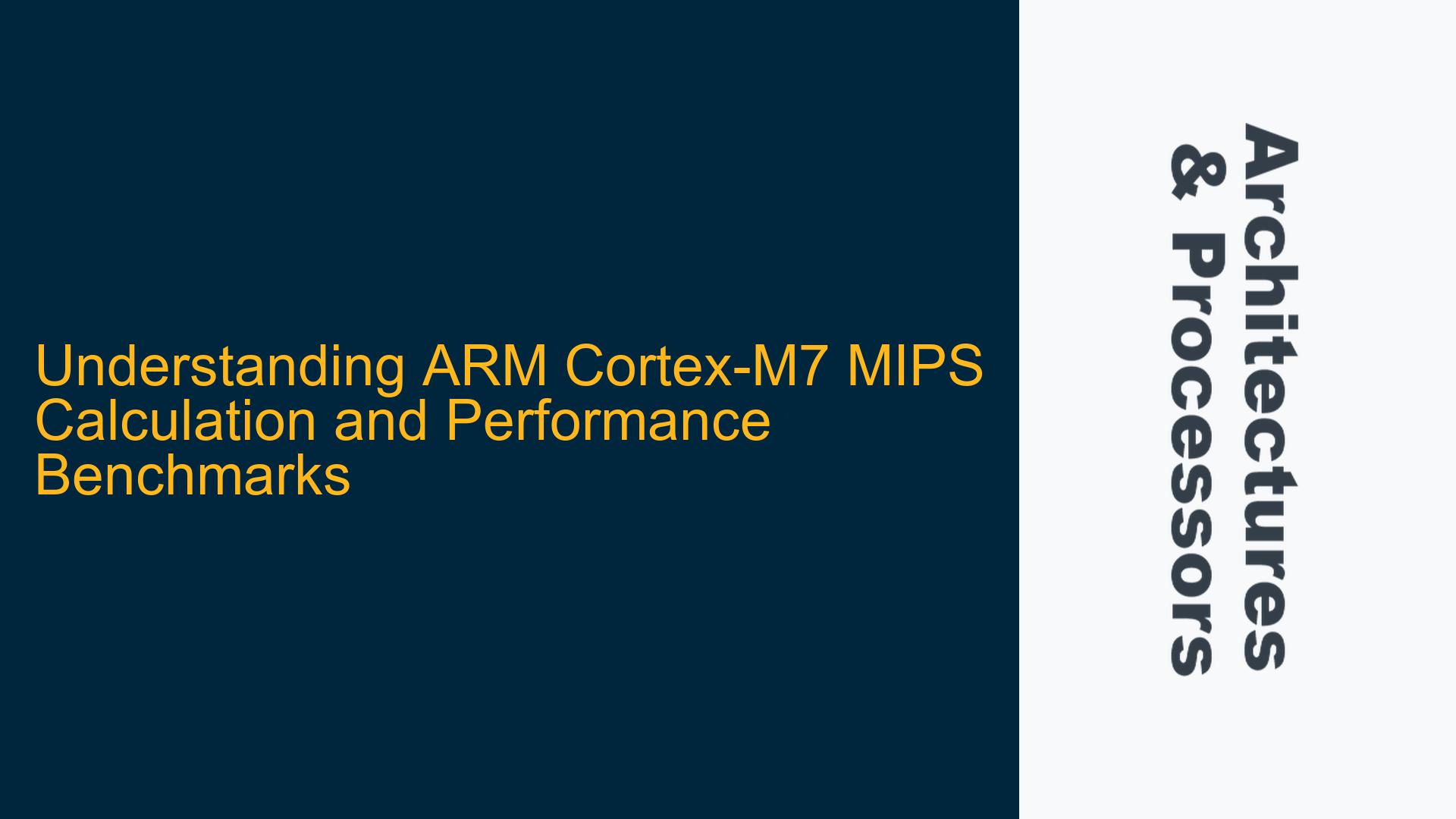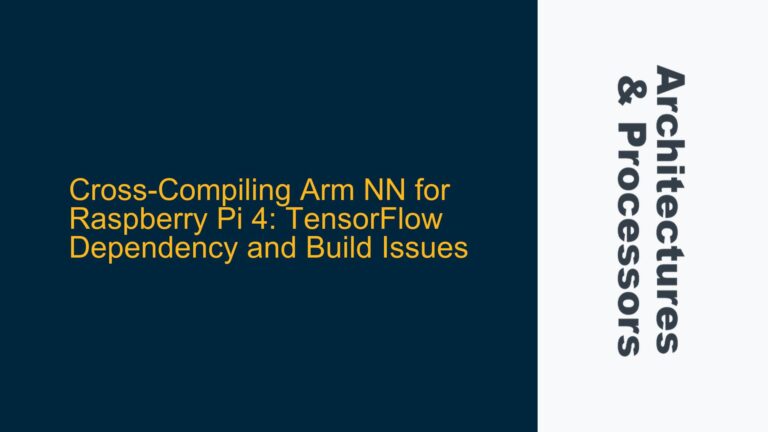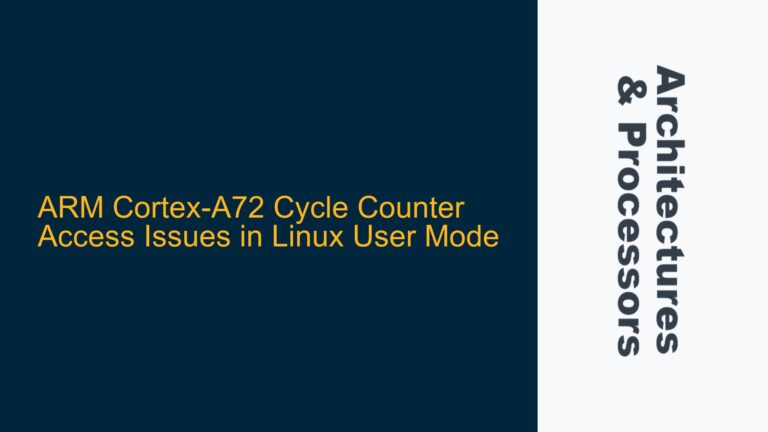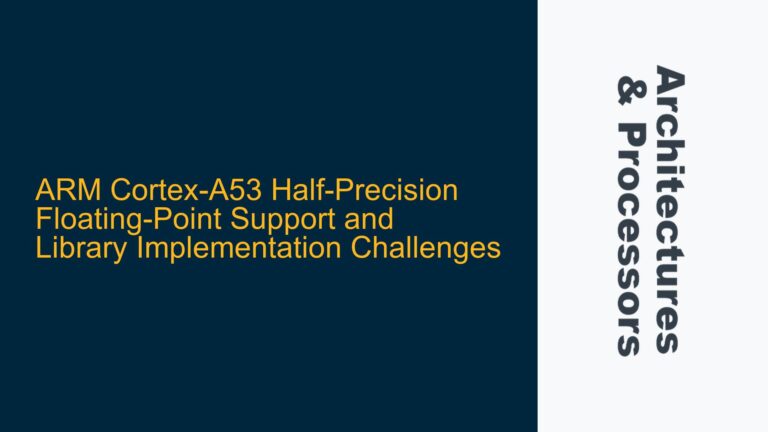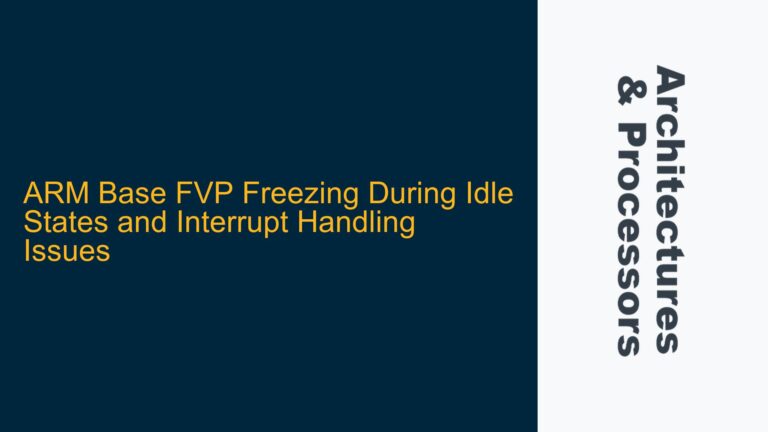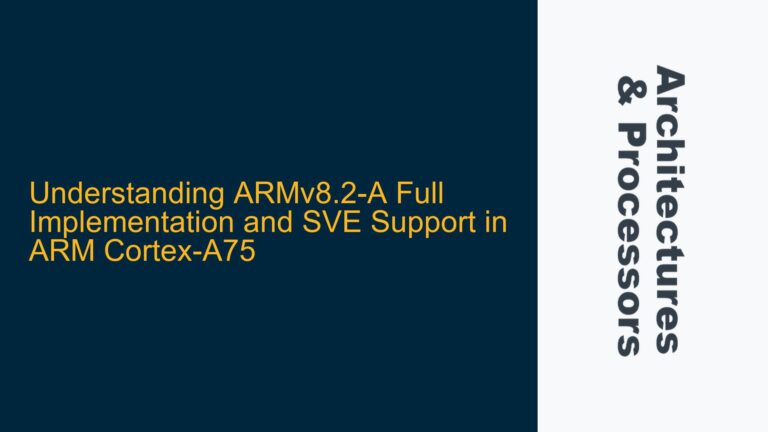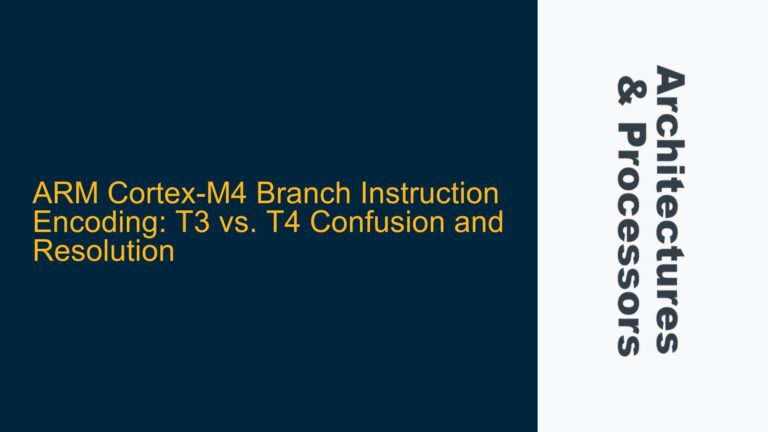ARM Cortex-M7 Peak MIPS and Real-World Performance Discrepancies
The ARM Cortex-M7 is a high-performance microcontroller core designed for embedded applications requiring significant computational power. One of the key metrics often used to evaluate the performance of such processors is MIPS (Million Instructions Per Second). However, calculating MIPS for the Cortex-M7 is not straightforward due to its superscalar architecture, which allows it to execute up to two instructions per cycle under ideal conditions. This means that, in theory, the Cortex-M7 can achieve a peak MIPS rating of 2 MIPS per MHz. For example, a 300 MHz Cortex-M7 could theoretically execute up to 600 MIPS.
However, real-world performance often falls short of this theoretical peak due to several factors. First, not all instructions can be dual-issued. The Cortex-M7’s dual-issue capability is limited to specific instruction pairs, and certain instructions, such as branches or complex operations, cannot be executed in parallel. Second, branch prediction misses can introduce pipeline stalls, reducing the effective MIPS. When a branch prediction fails, the pipeline must be flushed, and the processor must fetch instructions from the correct branch target, leading to cycles where no useful work is done. Third, memory access latency can also impact performance. If the processor is waiting for data from memory, it cannot execute instructions, further reducing the effective MIPS.
In addition to these architectural limitations, the specific implementation of the Cortex-M7 in a given microcontroller can also affect performance. For instance, the clock speed of the processor, the design of the memory subsystem, and the efficiency of the bus interfaces all play a role in determining the actual MIPS that can be achieved. Therefore, while the theoretical peak MIPS provides a useful upper bound, it is essential to consider these real-world factors when evaluating the performance of a Cortex-M7-based system.
Factors Affecting GPIO Toggling Speed and Misinterpretation as Performance Metric
One common misconception in evaluating microcontroller performance is using GPIO (General Purpose Input/Output) toggling speed as a proxy for overall processor performance. While GPIO toggling can provide some insight into the speed at which a microcontroller can execute simple tasks, it is not a reliable indicator of the processor’s data processing capabilities. Several factors can limit GPIO toggling speed, and these factors are often unrelated to the core processing power of the Cortex-M7.
First, the clock frequency of the peripheral bus to which the GPIO pins are connected can be a limiting factor. In many microcontroller designs, the GPIO peripherals are connected to a peripheral bus that operates at a different clock frequency than the processor core. For example, the processor core might run at 300 MHz, while the peripheral bus operates at 150 MHz. This discrepancy can introduce delays in GPIO operations, as the processor must wait for the peripheral bus to complete its transactions.
Second, the programming model of the GPIO peripheral can impact toggling speed. Some GPIO peripherals allow pins to be toggled with a single write operation, while others require a read-modify-write sequence. The latter approach is slower because it involves multiple bus transactions. Additionally, the maximum toggling rate of the I/O pin itself can be a limitation. High-drive current requirements for certain pins can slow down the switching speed of the transistors, reducing the maximum achievable toggling rate.
Third, the choice of bus protocol used for the GPIO peripheral can also affect performance. For example, the AMBA APB (Advanced Peripheral Bus) protocol, commonly used for low-speed peripherals, requires at least two clock cycles per transfer. In contrast, the AMBA AHB (Advanced High-performance Bus) protocol can achieve single-cycle transfers, depending on the implementation. However, even with AHB, the Cortex-M0/M0+ processors typically require two clock cycles for single data accesses due to their pipeline nature. Some Cortex-M0+ microcontrollers offer an optional single-cycle I/O interface for high-speed peripherals, allowing GPIO pins to be toggled at the full clock speed of the processor.
Finally, the superscalar nature of the Cortex-M7 cannot be leveraged for GPIO operations. When performing successive writes to a GPIO register, these operations are serialized because the peripheral bus interface can only handle one transfer at a time. This means that even though the Cortex-M7 can execute two instructions per cycle, it cannot perform two GPIO writes simultaneously. As a result, GPIO toggling speed is not a reliable indicator of the processor’s overall performance.
Benchmarking Cortex-M7 Performance: Dhrystone, CoreMark, and Floating-Point Benchmarks
To accurately assess the performance of the ARM Cortex-M7, it is essential to use standardized benchmarks that reflect real-world processing tasks. Two of the most widely used benchmarks for microcontrollers are Dhrystone and CoreMark. Dhrystone is a synthetic benchmark that measures integer performance, while CoreMark is a more modern benchmark designed to provide a more representative measure of a processor’s capabilities. Both benchmarks are useful for comparing the performance of different microcontrollers, but they have their limitations.
Dhrystone, while widely used, has been criticized for its lack of relevance to modern embedded applications. It primarily focuses on integer operations and does not account for the performance of floating-point units (FPUs) or other specialized hardware. CoreMark, on the other hand, is designed to be more representative of real-world workloads, incorporating a mix of integer and control operations. However, like Dhrystone, CoreMark does not fully capture the performance of floating-point operations, which are increasingly important in applications such as digital signal processing and machine learning.
For applications that require floating-point performance, benchmarks such as Linpack (Linear Algebra Package) are more appropriate. Linpack measures the performance of a system in solving dense systems of linear equations, which is a common task in scientific computing and engineering. However, it is important to note that the Cortex-M7’s floating-point unit (FPU) can vary between single-precision and double-precision implementations. Single-precision FPUs are more common in cost-sensitive applications, while double-precision FPUs are typically found in higher-end microcontrollers.
The STM32F767 microcontroller, for example, features a Cortex-M7 with a double-precision FPU, allowing it to achieve higher performance in floating-point benchmarks compared to the STM32F746, which has only a single-precision FPU. This difference can be significant in applications that require high-precision calculations, such as financial modeling or advanced control systems. However, even with a double-precision FPU, the performance of the Cortex-M7 in floating-point benchmarks will be influenced by factors such as memory bandwidth and cache efficiency.
In conclusion, while MIPS can provide a useful theoretical upper bound for the performance of the ARM Cortex-M7, it is essential to consider real-world factors such as instruction mix, branch prediction, and memory latency when evaluating actual performance. GPIO toggling speed, while easy to measure, is not a reliable indicator of overall processor performance due to the various limitations imposed by peripheral bus design and programming models. Instead, standardized benchmarks such as Dhrystone, CoreMark, and Linpack should be used to assess the performance of the Cortex-M7 in a more representative manner. By understanding these nuances, developers can make more informed decisions when selecting and optimizing microcontrollers for their specific applications.
